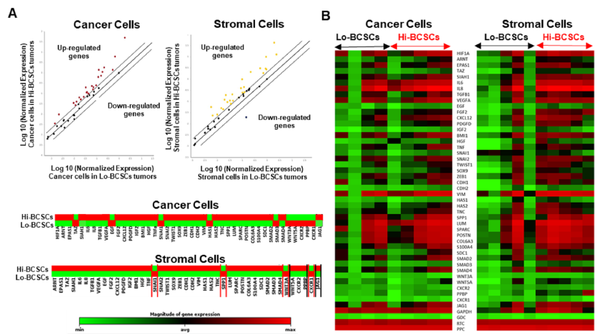-
Home
-
About JCTR
-
Gold Open Access
-
Issues
-
Editorial board
-
Author guidelines
-
Publication fees
-
Online first
-
Special issues
-
News
-
Publication ethics
-
Partners
-
Submit your manuscript
-
Submit your review report
-
Editorial Office
-

This work is licensed under a Creative Commons Attribution-NonCommercial 4.0 International License. ISSN print: 2382-6533 ISSN online: 2424-810X
Volume 7 Issue 5
Evaluation of breast cancer stem cells in human primary breast carcinoma and their role in aggressive behavior of the disease
Ninjit Dhanota, Amanjit Bal, Gurpreet Singh, Sunil K Arora*
Dhanota et al. J Clin Transl Res 2021; 7(5):8
Published online: September 29, 2021
Abstract
Background & aim: To delineate the underlying molecular mechanisms responsible for the intratumoral enrichment of BCSCs in aggressive breast tumors, we evaluated the frequency and characteristics of breast cancer stem cells (BCSCs) within the tumor tissue in primary human breast carcinomas. We assessed the expression profiles of various genes in cancer cells and stromal cells from these tumors to delineate the role played by the cellular niche in de novo origin or expansion of intra-tumoral cancer stem cells.
Method: The study included primary tumor and adjacent normal breast tissue specimens from chemotherapy-naïve breast carcinoma patients. The BCSCs, identified as Lin-CD44+CD24- and aldehyde dehydrogenase 1 A1 positive, were enumerated. The flow-cytometrically sorted stromal, and cancer cells were processed for gene expression profiling using a custom-designed PCR array of genes known to facilitate disease progression.
Results: The frequency of BCSCs within the tumor mass correlated significantly with histopathological and molecular grades of tumors, indicating a direct relationship of BCSC with the aggressive behavior of breast cancer. Further, a significantly increased expression of the genes associated with growth factors, cytokines & matricellular proteins in tumors was found in high BCSCs compared to Lo-BCSC tumors, suggesting the possible contribution of stromal and cancer cells in an intratumoral expansion of CSCs. Similarly, a significant up-regulation of genes associated with hypoxia and angiogenesis in Hi-BCSCs tumors further supported the role of a hypoxic environment.
Conclusion: Overall, the findings suggest the molecular crosstalk between stromal cells and cancer cells potentially (directly or indirectly) contributes to the expansion of cancer stem cells.
Relevance for patients: The current study highlights the importance of cancer stem cells as a potential future predictive/prognostic marker for aggressive breast cancer. The present study predicts the potential risk stratification based on the frequency of BCSCs in primary breast tumors and existing prognostic factors.

DOI: http://dx.doi.org/10.18053/jctres.07.202105.008
Author affiliation
1. Department of Immunopathology, Post Graduate Institute of Medical Education and Research, Chandigarh, India.
2. Department of Radiation Oncology, Weill Cornell Medicine, New York, USA.
3. Department of Histopathology, Post Graduate Institute of Medical Education and Research, Chandigarh, India.
4. Department of General Surgery, Post Graduate Institute of Medical Education and Research, Chandigarh, India.
*Corresponding author
Sunil K Arora
Department of Immunopathology, Post Graduate Institute of Medical Education and Research, Chandigarh. 160012, India.
Tel: +91-172-2755192
Fax: +91-172-2744401
E-mail: arora.sunilkumar@pgimer.edu.in
Handling editor:
Michal Heger
Department of Pharmaceutics, Utrecht University, the Netherlands
Department of Pharmaceutics, Jiaxing University Medical College, Zhejiang, China

